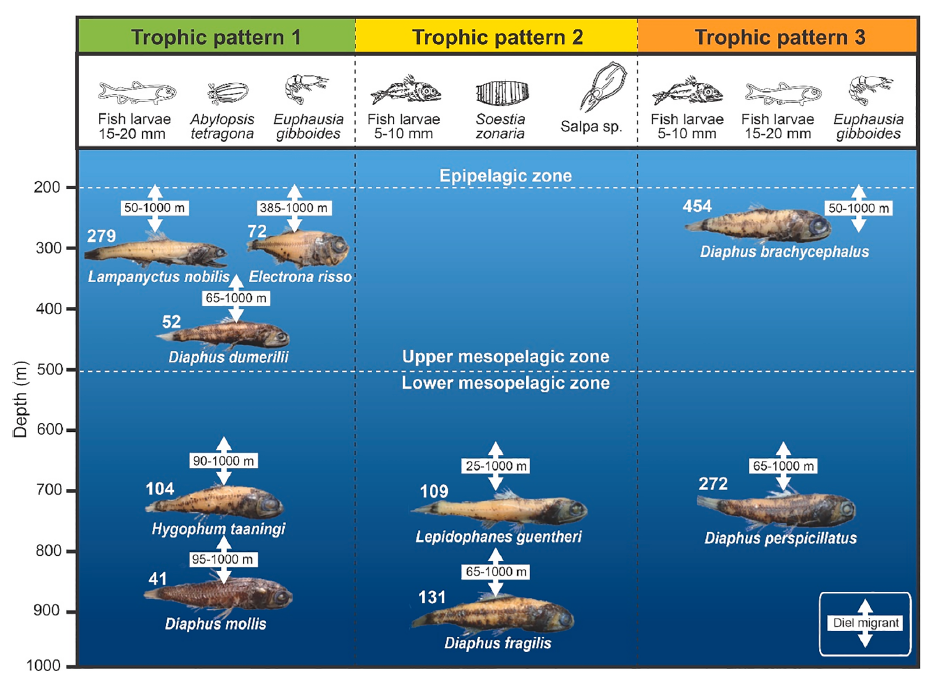
Lanternfishes (Myctophidae) are among the most abundant, widespread, and diverse fish groups in the world ocean. They account for a significant part of oceanic fish biomass and play crucial roles in various ecosystem processes, including carbon sequestration and nutrient recycling. However, despite the increasing risks they face (e.g. global warming, plastic pollution, and exploitation of deep-sea resources), many aspects of the lanternfishes ecology still remain poorly known. Here, we investigate the species composition, vertical migration, and trophic ecology of lanternfishes in the Southwestern Tropical Atlantic (SWTA) and the influence of physicochemical factors on their horizontal structuring. We show that lanternfishes are a highly diverse and an abundant fish family of the SWTA, comprising at least 33 species and contributing 40% of all fish collected (in number). We reveal that some of these species may differ in their patterns of prey composition and migratory behaviour, leading to multidimensional niches, underestimated trophic links (e.g. gelatinous organisms), and several mechanisms to avoid competitive exclusion. At least 73% of the lanternfish species reported here seem to migrate to the surface to feed at night. Additionally, they are a central food source for mesopelagic and bathypelagic predators, thereby connecting shallow and deep-sea ecosystems. Finally, we show that the structure of lanternfish assemblages is not strongly affected by environmental conditions analysed here (i.e., throughout the thermohaline structure and current systems), leading to weak horizontal assemblage separation.
DOI: doi.org/10.1016/j.pocean.2021.102695
Reference
Eduardo L.N., Bertrand A., Mincarone M.M., Martins J.R., Frédou T., Assunção R., Lima R.S., Ménard F., Le Loc’h F., Lucena-Frédou F. 2021. Distribution, vertical migration, and trophic ecology of lanternfishes (Myctophidae) in the Southwestern Tropical Atlantic. Progress in Oceanography, 199: 102695.






